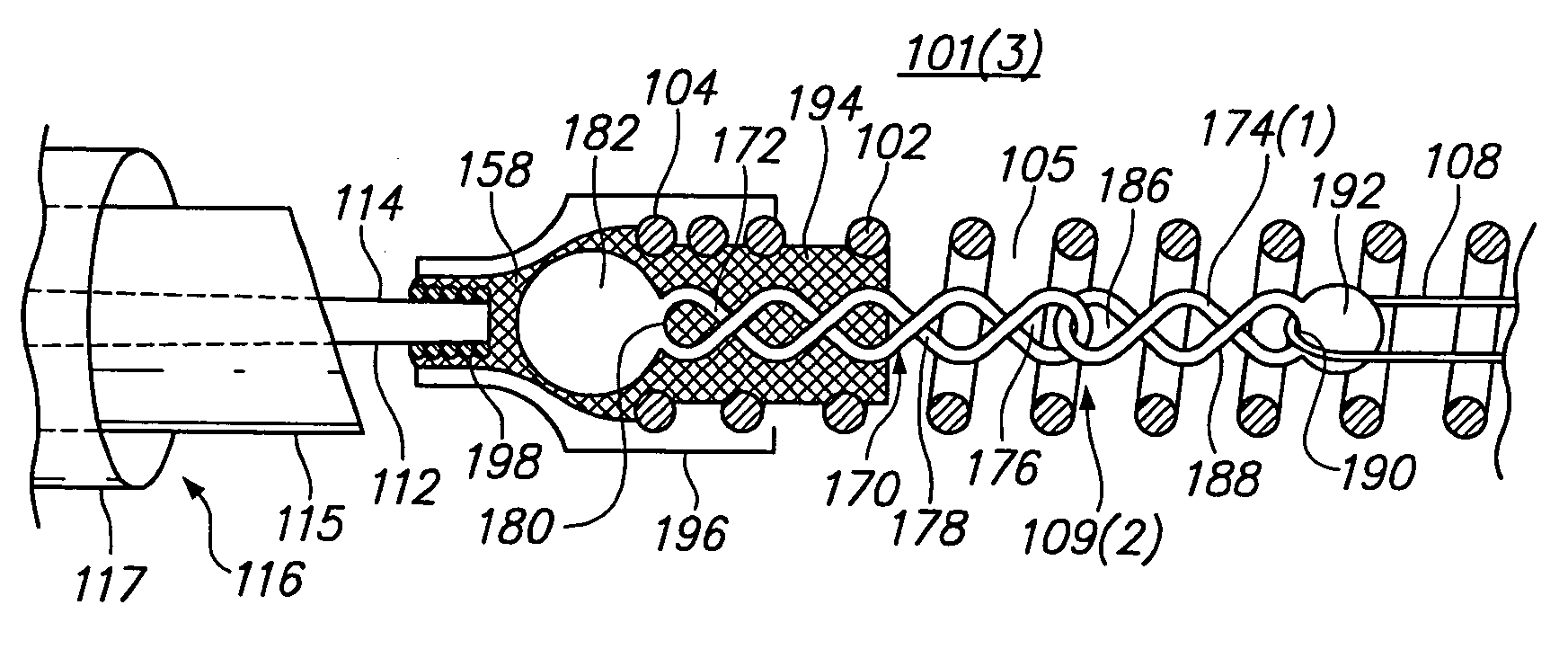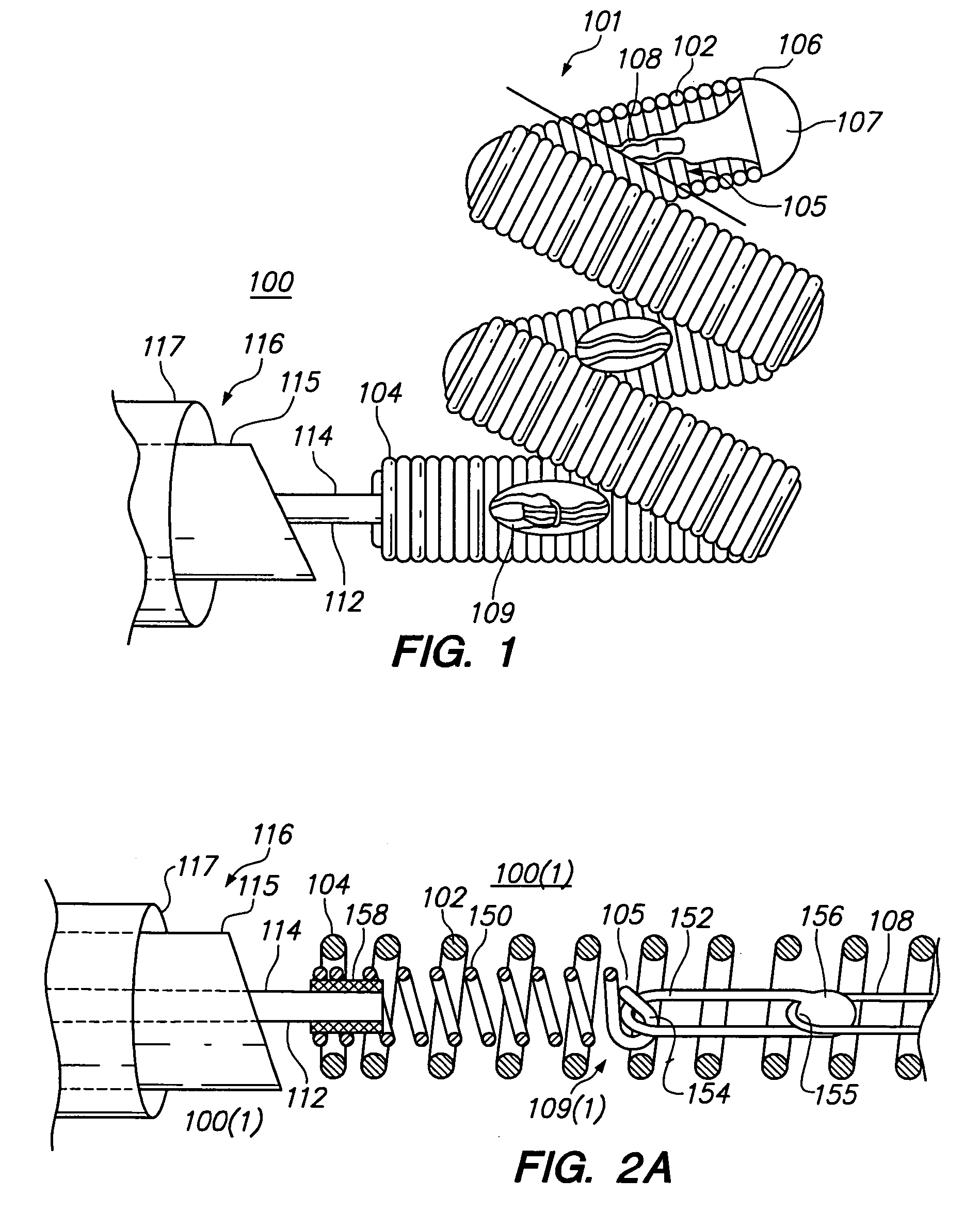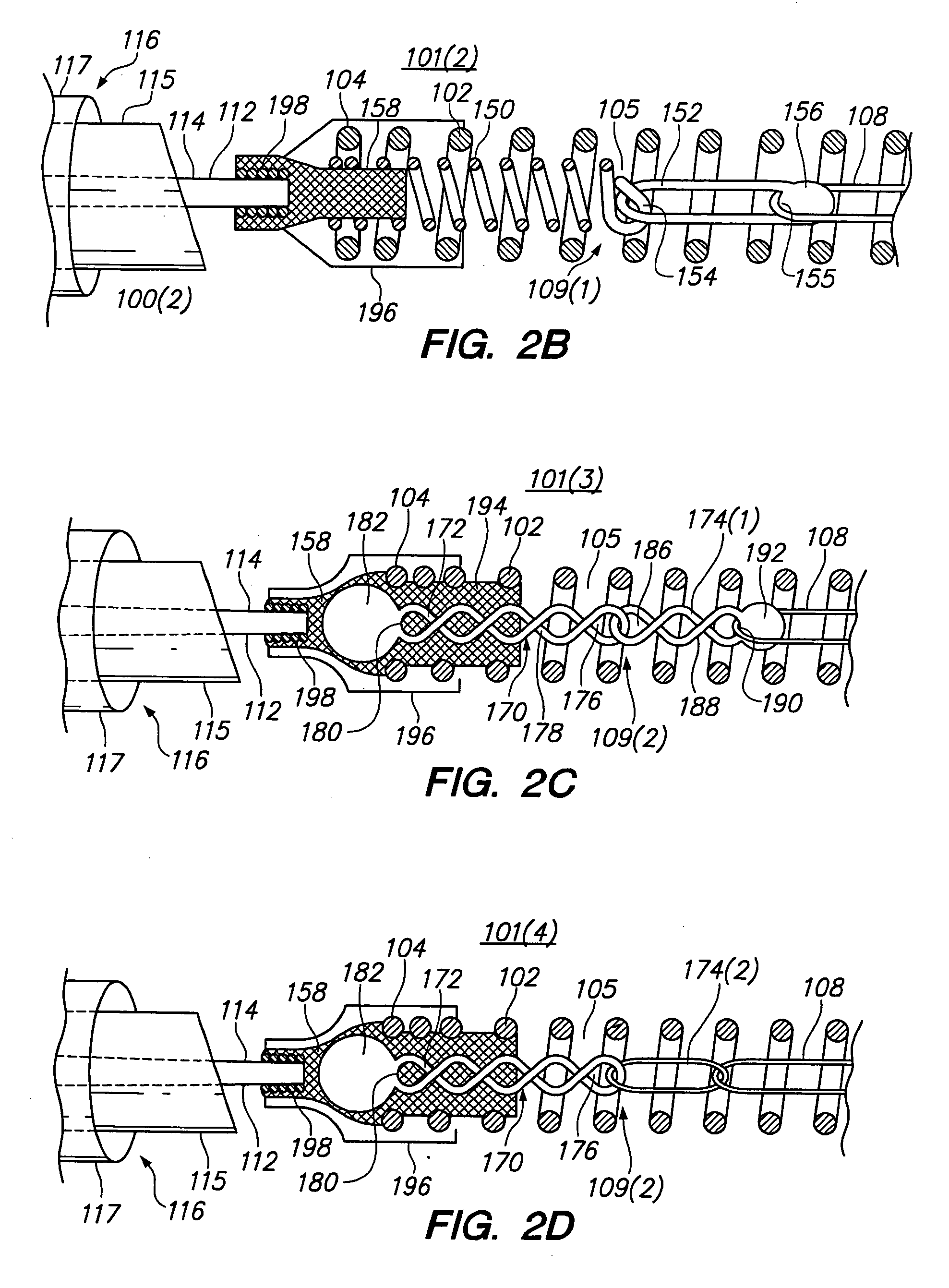[0014]Although the present inventions should not necessarily be limited by this
advantage, the presence of the link allows the stretch-resisting member to be located away from any heat generated at the proximal end of the primary coil during the manufacturing process. The flexible connection between the anchor coil and the link, provide the desired flexibility for the proximal end of the primary coil. By way of non-limiting example, the length of the anchor coil, having a preferable length of 1.0 mm, and link combination can be reduced to about 1.8 mm from 2.6 mm. The length of the link can be less than 1 mm.
[0015]In accordance with a third aspect of the invention, the anchor assembly comprises an anchor chain comprising a proximal twisted link and a distal twisted or untwisted link, which is directly or indirectly coupled to the stretch-resisting member. The presence of the distal link allows the length of the proximal twisted link to be reduced, while locating the stretch-resisting member away from any heat generated at the proximal end of the primary coil during the manufacturing process. The reduction in the length of the relatively stiff proximal link, and the flexible connection between the proximal link and the distal link, provide the desired flexibility for the proximal end of the primary coil. By way of non-limiting example, the distal and proximal ends of the stretch-resisting member can be respectively affixed to the distal end of the primary coil and the distal link. By way of non-limiting example, a proximal twisted link having a preferable length of 2.6 mm can be reduced to about 1.2 mm, while the length of the distal link can be less than 1 mm. In the preferred embodiment, the anchor chain only includes the proximal and distal links, but can include additional links as well depending on the desired flexibility and length of the anchor chain. Filler material, such as, e.g., PET,
polyamide,
silicon, or
polyurethane, can be used to provide
structural integrity to the proximal end of the primary coil where the proximal link may be affixed within the primary coil lumen in the absence of an anchor coil. The anchor chain can be composed of any suitable
biocompatible material, but in the preferred embodiment,
platinum is used.
[0016]Although the present inventions should not necessarily be limited by this
advantage, the presence of an anchor chain eliminates the need for a single piece proximal anchor, e.g., an anchor coil, or at the least, allows the length of the anchor coil to be reduced, while locating the stretch-resisting member away from any heat generated at the proximal end of the primary coil during the manufacturing process. The
elimination or reduction in the length of the relatively stiff anchor coil, and the flexible connections formed by the anchor chain, provide the desired flexibility for the proximal end of the primary coil. By way of non-limiting example, a 2.6 mm single piece proximal anchor can be replaced with a 2.4 mm anchor chain, with each of the proximal and distal links being about 1.2 mm. The lengths of the respective proximal and distal links, however, need not be the same. For example, the distal link can be smaller than the proximal link.
[0018]There are a variety of ways that the anchor coil and primary coil can be formed and incorporated into the vaso-occlusive device. For ease of assembly and to minimize the
exertion of axial stress on the windings of the anchor and primary coils, the windings of the anchor and primary coils can be open-pitched. For example, a preferred method comprises making the outer primary coil by winding a first wire into a first
helical coil so that the proximal end of the first
helical coil has open-pitched windings, and making the anchor coil by winding a second wire into a second
helical coil so that the second
helical coil has open-pitched windings. The anchor coil is then incorporated into the primary coil, e.g., screwing, such that the open-pitched windings of the anchor coil are disposed between adjacent open-pitched windings of the primary coil.
[0020]Although the present invention should not necessarily be limited by this
advantage, the incorporation of the anchor coil into the primary coil decreases the wall thickness of the proximal end of the vaso-occlusive device, thereby providing the desired flexibility for the proximal end of the primary
outer coil, while also locating the stretch-resisting member away from any heat generated at the proximal end of the anchor coil during the manufacturing process.
[0022]Although the present inventions should not necessarily be limited by this advantage, the presence of multiple detachment means allows for the deployment of vaso-occlusive devices with selectable length. This enables physicians to select the length of the deployed vaso-occlusive device as desired in light of the condition and size of the aneurysm being treated. The use of anchor assemblies to couple the stretch-resisting member to the primary
outer coil segments allows the stretch-resisting member to be located away from any heat generated at the proximal end of the primary coil during the manufacturing process.
 Login to View More
Login to View More  Login to View More
Login to View More 


